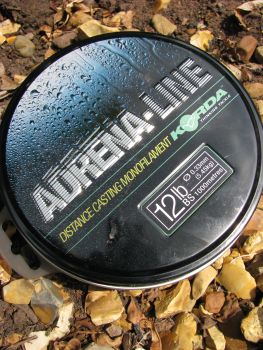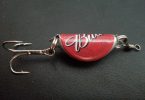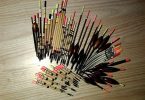It’s easy to put line onto a fixed spool reel, just tie it to the spool and wind it on. Simple…… However, to load a fixed spool reel properly you must think a little deeper. There are some basic rules to follow to make sure your line goes on correctly to let you fish effectively and reduce casting friction. One of the main points to consider is obviously the line that you choose to use; a top quality monofilament line is far more supple than some of the cheaper options, and will make loading it easier. Spend your money wisely; a few extra pounds buying a quality line ensures that the product should be consistent throughout with no weak spots, good knot strength and is abrasion resistant. Cheap lines may part when you have the fish of a lifetime on the other end!

Line twist is often discussed when loading a reel, but what does it mean and what problems does it cause? As you view your reel from the front, on most modern reels, the bale arm spins in a clockwise direction on the retrieve; to try and reduce line twist, the new line should leave the new spool in an anti-clockwise direction. Although this sounds complicated, it isn’t really as you are just ‘unwinding’ the twist from the new spool. It is impossible to completely remove line twist when loading; as the line is wound onto the reel, it has to move through 90 degrees when it contacts the bale arm to enter the spool. The reduction of significant amounts of ‘twist’ allow the line to lay flat on the bottom of the lake rather than spring up ruining presentation, and also increases casting distance.
Many anglers will pre-soak the new line in water for 24 hours before loading to help reduce ‘springiness’ and allow the line to become more flexible. When loading the reel, the use of a cheaper backing line can be a good idea on deeper spools to save money by limiting the amount of actual ‘fishing’ line that gets used. It is a good idea to closely match backing line to the new line, say, 6lb backing line to 5lb ‘fishing’ line to prevent the new line embedding between coils of larger diameter backing line and becoming trapped or damaged.
To attach the line to the spool, it is important to use a tidy knot which lays flat, which is trimmed well to prevent tag ends obstructing the loading process. You can load without tying it to the spool, but it can be a bit more awkward for the inexperienced angler. Most reel spools have the line capacity marked on in yards/metres or the equivalent diameter, so you have some idea what you will need; it’s no good loading a 300 metre capacity spool with 150 metres of line!
 New line needs to be put on under gentle pressure to ensure a good line lay. If the line has been soaked, then it also needs to be dried as it enters the spool. The easiest way to do this is by attaching the reel to the butt section of a rod, remove the spool and pass the new line down through the butt eye of the rod section. Remove the spool from the reel then tie the line on, and, with the bale open, replace the spool on the reel. Turning the reel handle closes the bale arm and the line can be wound on. After a few turns, check to make sure that the knot is covered, the line is sitting tightly on the spool and that line twist is minimal. Once the initial few turns have been completed, the remainder of the line can be put on using a gentle finger pressure to trap the line against the rod blank before it enters the spool. This allows the line to ‘bed’ consistently and helps to prevent slack loops causing further problems. If the line is wet, it can be drawn through a clean cloth to dry it.
New line needs to be put on under gentle pressure to ensure a good line lay. If the line has been soaked, then it also needs to be dried as it enters the spool. The easiest way to do this is by attaching the reel to the butt section of a rod, remove the spool and pass the new line down through the butt eye of the rod section. Remove the spool from the reel then tie the line on, and, with the bale open, replace the spool on the reel. Turning the reel handle closes the bale arm and the line can be wound on. After a few turns, check to make sure that the knot is covered, the line is sitting tightly on the spool and that line twist is minimal. Once the initial few turns have been completed, the remainder of the line can be put on using a gentle finger pressure to trap the line against the rod blank before it enters the spool. This allows the line to ‘bed’ consistently and helps to prevent slack loops causing further problems. If the line is wet, it can be drawn through a clean cloth to dry it.
The line should fill the spool completely, leaving a gap of approximately 1mm to the edge of the spool. Filling it correctly can add vital yards to casting as it reduces friction as the line goes over the lip of the spool.
Pre-stretch the line by anchoring it to a post then walking back 25 metres (or further), then fully engage the reel clutch and ‘bend into’ the line using the full test curve of your fishing rod. This last task helps the line bed properly onto the reel spool and helps eliminate the chances of line coiling up to spook fish near the bait when it rests on the lake bed.
Do it properly and it can save a season of problems, improve bite indication and up your catch rate; a bit of time taken when the new line is spooled on can save hours on the bank untangling a ‘bird’s nest’ when you should be catching fish!
Clint Walker, July 2010





















